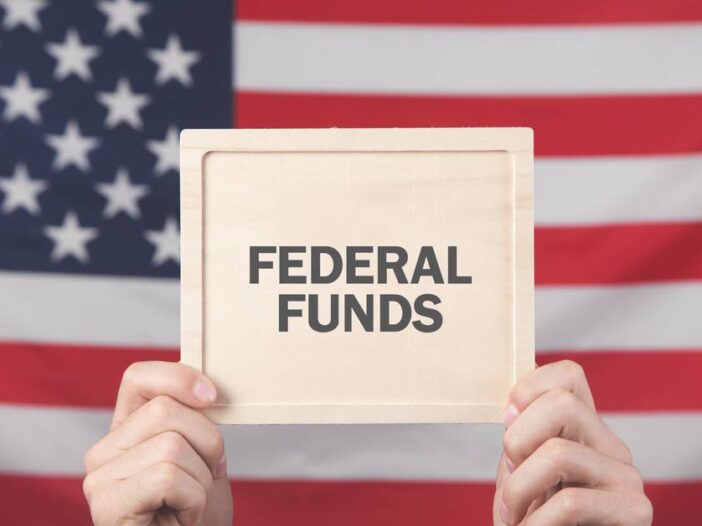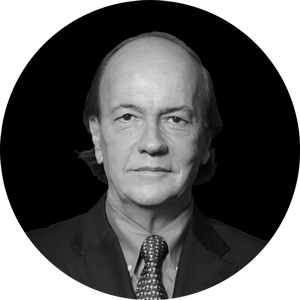The Content, the Environment, and the Federal Reserve
If prices are measured in money and if interest rates are the price of money, what determines those rates? Superficially, rates are determined by central banks in short maturities (short-term borrowing) and by markets in the longer maturities (long-term debt).
The most powerful central bank, the Federal Reserve, buys or sells short-term Treasury notes using cash created from thin air (when it buys) or that disappears into thin air (when it sells). These transactions are called open-market operations and are used to target a specified rate for federal funds (excess reserves of commercial banks also called fed funds). The target rate is the effective federal funds rate, also called the policy rate.
Intermediate and longer-term rates — most importantly, the yield-to-maturity on the 10-year Treasury note — are generally determined by banks and institutional investors trading through market makers called primary dealers. The Fed can intervene in that maturity also using quantitative easing or QE.
So, is that ‘the environment’ in McLuhan’s model?
A short-term policy rate set by the Fed and a long-term yield set mainly by primary dealers and the market? No. Rates are visible and so are open-market operations and market makers. The environment is about invisible forces.
Even when the Fed does not intervene in longer maturities by directly buying the 10-year Treasury note, that rate is affected by the short-term fed funds rate. This is because investors in long-term securities are often leveraged and finance their purchases with overnight loans (called repurchase agreements or repos) whose rate is tied to the fed funds rate.
These leveraged investors, often hedge funds, consider the 10-year note rate ‘rich’ or ‘cheap’ based on the present value of a hypothetical strip of overnight rates. Of course, there are no overnight rates quoted 10 years forward, but rates and derivatives based on five-year notes and two-year notes can act as a substitute along with the overnight rate projected by futures markets two years forward. The calculations are dense, but the bottom line is that overnight rates can affect long-term rates through these financing channels.
So, it’s not too much to say that all interest rates begin with the Fed and are controlled directly or indirectly by the Fed with allowance for liquidity preferences and inflation expectations. Still, the Fed is not the environment. The Fed is not active; it is reactive. The Fed is trying to control the economy, but it must react to the economy to guide its controls.
Stay up to date with the latest investment trends and opportunities. Click here to learn more.
What is the environment?
If the Fed is not the environment, what is? And how does the Fed react to it?
At any point in time, there exists what economists call the natural real rate of interest, also called the neutral rate. This is the interest rate that promotes maximum real growth and price stability.
The difficulty is that the natural real rate is not directly observable. You can’t look it up on a chart or using a computer. A natural real rate exists in theory, but finding it is like searching for a lost object in the dark. Policy makers, especially the Fed, target the natural real rate, but they are guessing as they go.
The impediments to hitting the natural real rate are formidable. Nominal growth that exceeds the real capacity of the economy can lead to inflation. Growth that falls short of capacity can result in disinflation, deflation and rising unemployment.
What is the output capacity of the economy? Since the Second World War, the US economy has averaged over 4% annual real growth. Since 1980, the average annual growth rate in recoveries has been 3.2%. Average annual growth during the 2009–19 recovery was 2.2%. Annualised real growth in the fourth quarter of 2020 during the post-pandemic bounce was 4.1%.
Each of these data points reflects a complex web of factors in the economic environment. Still, there’s nothing in this data that permits precision in estimating the real output capacity of the economy. Not that economists don’t try…
Shooting in the dark
Economist Larry Summers argues that the downward trend in real growth from the 1950s to the 2010s represents what he calls secular stagnation due to a variety of demographic and technological factors. Economists Carmen Reinhart and Kenneth Rogoff make a compelling case that high levels of debt-to-GDP in the US are a headwind to growth and that lower real output is to be expected. Others argue that reducing burdens such as high taxation and excessive regulation could quickly return the US to the glory days of 3–4% real growth.
All of these views are plausible. The truth is that no one knows what the potential real growth for the US economy is. This leaves the Fed in the position of trying to use an invisible weapon (the natural real rate) to hit an invisible target (maximum real output) without causing inflation. It uses the policy rate to accomplish this mission. Still, it is always guessing.
The Fed’s interest rate guesswork is greatly complicated by the severe economic recession that resulted from the pandemic in 2020 and the extraordinary fiscal response in 2020–21. Annual real growth in 2020 was a decline of 3.5% compared to 2019. Yet this annual figure masks wild quarterly swings, including a 31.4% annualised decline in the second quarter of 2020 followed by a 33.4% annualised increase in the third quarter. Both figures are record quarterly swings. The annual GDP decline in 2020 was the biggest drop in US growth since 1946. The fiscal response to this economic calamity was unprecedented.
Unexplored territory
The US is in unexplored territory in terms of debt, deficits and spending. The Congress and White House are not alone in breaking new ground in this regard. In addition to its interest rate policy, the Fed has expanded its balance sheet with money printing and asset purchases. In fact, both the Fed’s balance sheet and the money supply are at all-time highs by many trillions of dollars.
What was the Fed to make of this explosion of debt and money supply? Both were part of the environment in which the Fed was to target the real rate of interest. What exactly was the environment? I’ll share my thoughts in a future edition of The Daily Reckoning Australia.
All the best,
 |
Jim Rickards,
Strategist, The Daily Reckoning Australia
P.S: Learn why the property market is unlikely to crash until 2026 and how you can potentially capitalise on this trend. Download your free report now.

